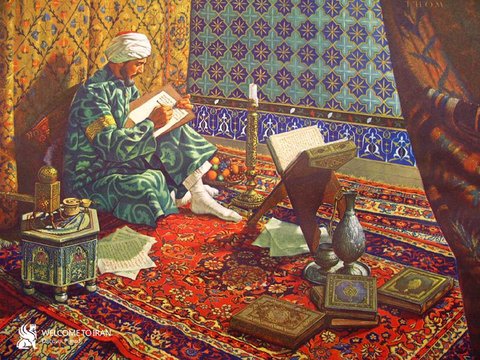Iran (IMNA) - The spindle-shaped structure that holds Ibn Sina's tomb also houses a museum and a library, and the enclosure is surrounded by beautiful green gardens, perhaps to his liking.
In the year 980 CE, a man named Abu Ali al-Hussain ibn Abdullah al-Balkhi was born in the modern-day Uzbek settlement of Afshana. Ibn Sina was a philosopher, physician, mathematician, astronomer, and scholar. He is now regarded as the "father of modern medicine" by many people.
In the occupying Samanid Empire, Ibn Sina's Persian father served as an administrator. He was raised in affluence, acquired a fine education, memorized the whole Qur'an by the age of 10, and then devoted his life to the study of astronomy, music, medicine, philosophy, and other disciplines.
Ibn Sina is regarded as one of the most prominent thinkers of the pre-modern age in addition to being the founder of modern medicine.
Ibn Sina made substantial contributions to Islamic thinking and is regarded by some as the "founder of scholastic philosophy in its systematic formulation." He was well-versed in early Islamic, Pre-Islamic, Persian, Greek, and Oriental philosophy.
Ibn Sina's pupil and biographer Abu Ubayd Jozjani claims that the polymath had a very unsettled existence because of the erratic political and social climate of the period. He had to relocate frequently until settling down in Isfahan, a city in central Iran.
He completed the majority of the 220 works that have been attributed to him in Isfahan.
Al-Qanun fi al-Tibb, widely known as "The Canon of Medicine," is one of Ibn Sina's well-known writings and is a comprehensive encyclopedia of medical knowledge drawn from ancient sources. Up until the 17th century in Europe, it served as a university-level reference after being translated into Latin in the 12th century.
It has dominated all medical publications written by authors in medieval Europe for centuries as the most reliable work on medicine and is still used as a source of reference by all medical professionals.
Many of the practices established by Ibn Sina were followed in both the East and the West.
The quarantine system that the entire world was subjected to during the Covid-19 epidemic has its roots in Ibn Sina's Al-Arbainiya (forty in Arabic) technique.
The eminent Persian physician recognized that some diseases are brought on by microbes and advised self-isolation for contagious people in order to stop the spread of the ailment.
The amazing book "Kitab Al-Shifa" (The Book of Healing), authored by Ibn Sina, is regarded as the biggest and most thorough encyclopedia ever produced by a single author.
Ibn Sina researched a lot of Greek philosophy and Islamic texts since he was a devoted Muslim and wanted to use them to demonstrate the existence of the Almighty.
Ibn Sina, a specialist in mathematics and astronomy, devoted a significant portion of his work "Al-Shifa" to these two fields, offering fresh ideas from a scientific standpoint.
The brilliant physician and philosopher died in Ramadhan of 1037 at the age of 58, leaving behind an impressive legacy. Today, Hamadan, where he was buried, is a popular tourist destination.


Your Comment